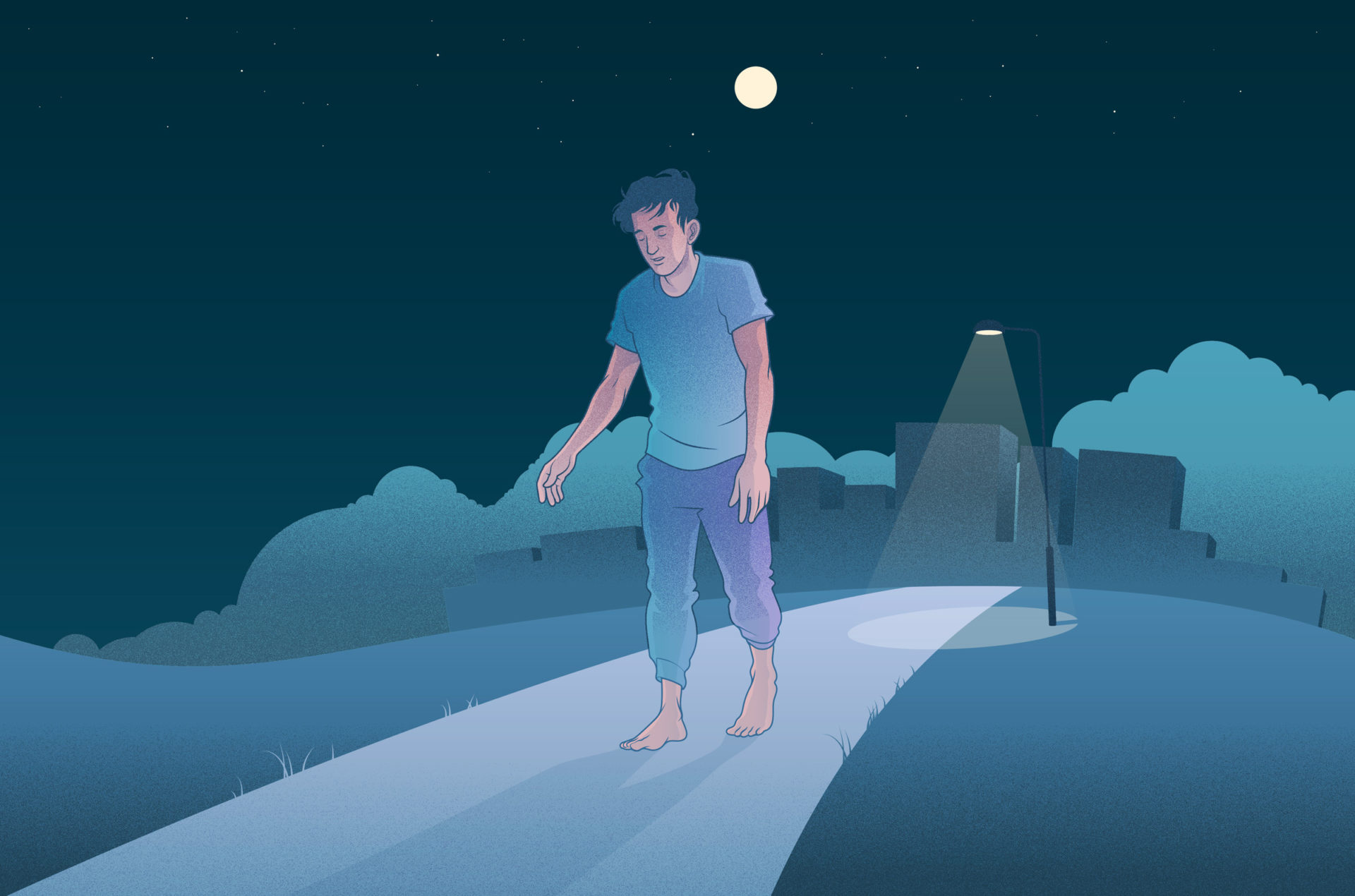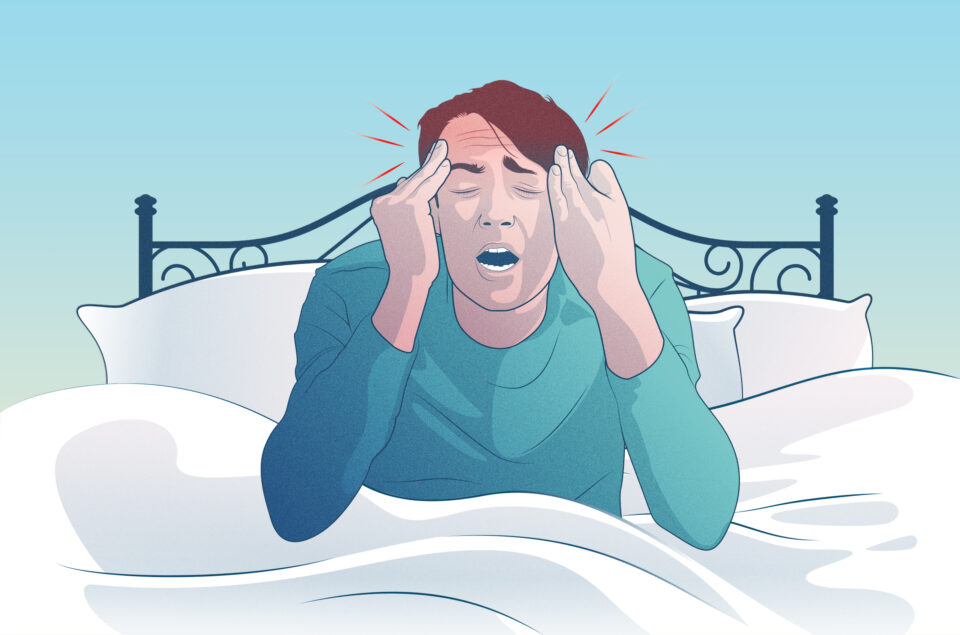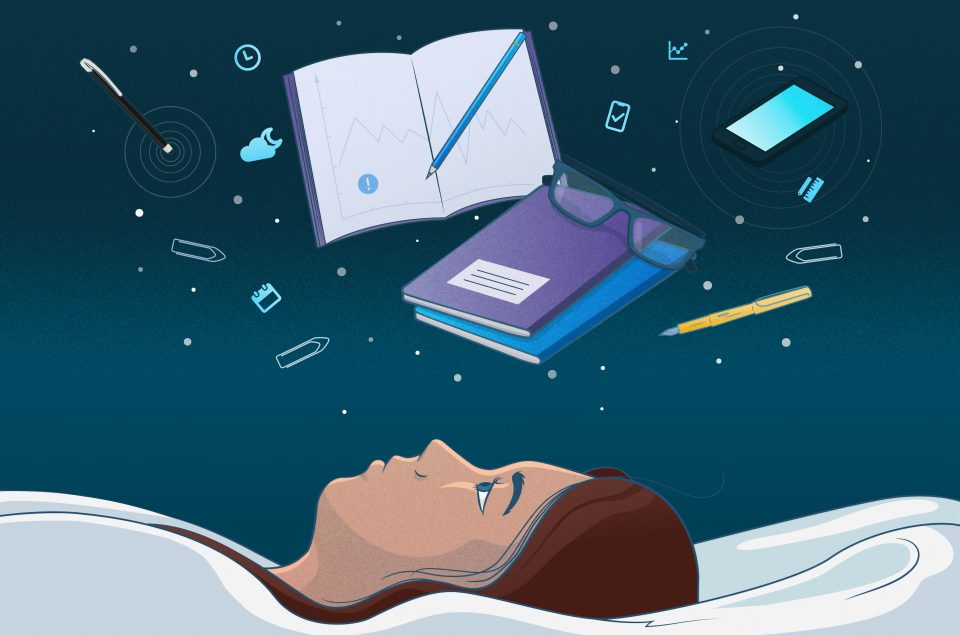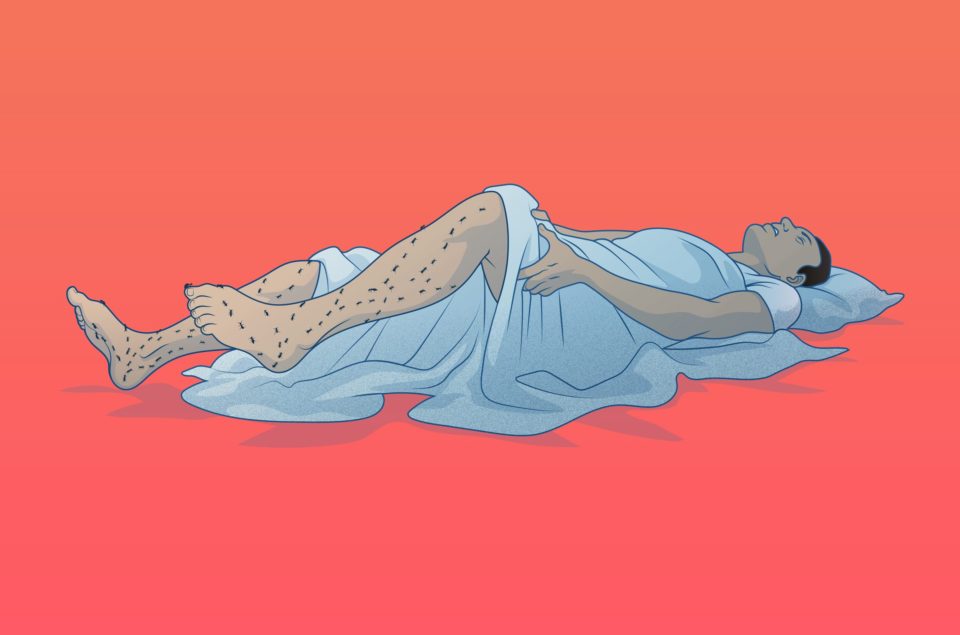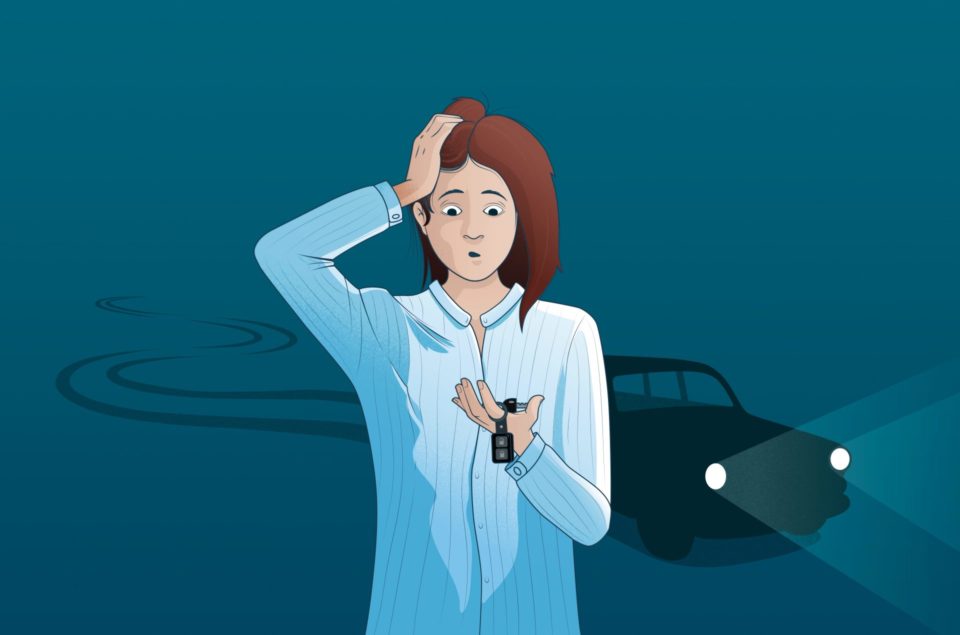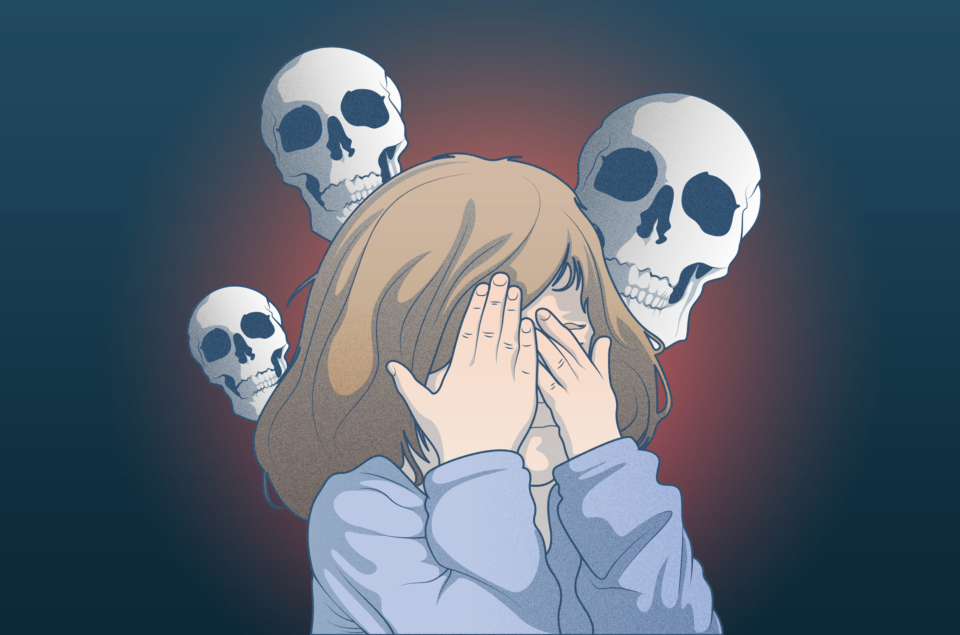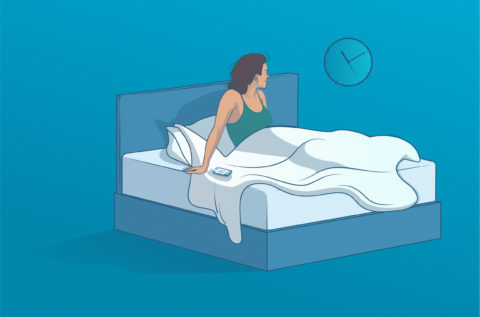Somnambulism or sleepwalking as it’s commonly known as, is a behavior characterized by partial arousal during slow wave sleep. It’s a sleep disorder that affects more than 8.4 million U.S. adults and is even more common in children. We’ll dig deeper to understand this parasomnia and how to prevent episodes.
Jump directly to:
- Is sleepwalking dangerous?
- How to stop sleepwalking
- What happens if you wake up a sleepwalker
- Summary FAQs
Why do people sleepwalk? 5 main triggers
Although the exact causes of sleepwalking are still unknown, medical professionals have concluded that the following can trigger or worsen the disorder:
- Sleep deprivation: lack of sleep makes you more vulnerable to sleepwalking. Sudden changes in the sleep schedule, such as jet lag or a change in work schedule, can disrupt sleep and increase the risk of sleepwalking too.
- Genetics: sleepwalking tends to run in families, suggesting that there may be a genetic component to the disorder. A study identified seven regions on chromosome 20 common among sleepwalkers. However, the study also suggested that sleepwalking can be inherited in different ways and is not linked to just one gene.
- Medical conditions: infections with fever, migraines, hyperthyroidism and epilepsy, among others, can increase the risk of sleepwalking.
- Stress or anxiety: these mental health issues can interfere with the normal sleep process and may increase the likelihood of somnambulism.
- Medications and drugs: certain medications may induce sleepwalking even if you haven’t experienced it before: antibiotics, antipsychotics, antidepressants, sedatives, beta-blockers, and anticonvulsants can cause it as a side effect.
Sleep disorders associated with sleepwalking
Studies have also found that children who suffer from other associated sleep disorders, such as Restless Leg Syndrome (RLS) or Night Terrors are more likely to also experience sleepwalking. Other sleep disorders, such as insomnia and sleep apnea, can increase the likelihood of somnambulism. Insomnia, or difficulty falling asleep or staying asleep, can lead to fragmented sleep, which can cause a person to be more prone to sleepwalking episodes. Sleep apnea, a disorder in which a person’s breathing is repeatedly interrupted during sleep, can also disrupt the normal stages of sleep and make a person more likely to sleepwalk.
Is sleepwalking a sign of mental illness?
There is no direct connection between sleepwalking and mental health. However, sleepwalking can be triggered by mental health conditions in certain cases. A study from Stanford University showed that people with depression were 3.5 times more likely to sleepwalk than those without. The same study also showed that people with alcohol abuse/dependence or obsessive-compulsive disorder were significantly more likely to have sleepwalking episodes as well as those taking SSRI antidepressants.
Other studies suggest that experiencing stress, conflicts or difficult situations during the day, and living with trauma may also be contributing factors for sleepwalking.
Is sleepwalking dangerous?
Most often, sleepwalking episodes are harmless for your health, but they can become unsafe if the behavior is repeated and it occurs extensively in an environment where the person could sustain an injury to themselves or to others. These may include:
- Leaving the bedroom (through the window or door)
- Using stairs
- Picking up heavy objects
- Using sharp objects such as knives
- Driving
- Acting violently
- Performing complex and dangerous tasks.
Moreover, sleepwalkers who are aware of their condition may suffer from sleep loss or excessive daytime sleepiness due to the stress of not knowing what they may be able to do during an episode. This can also lead to fatigue and mental health challenges.
How to tell if someone is sleepwalking
A common misconception is that it is simply as the name states – walking in your sleep. However, it can also be defined as talking in your sleep, sitting up in bed and performing other simple, repetitive tasks while asleep.
- Talking in your sleep
- Sitting up in bed or walking around
- Performing simple, repetitive exercises
- Difficulty waking up during the sleepwalking episode
- Can show odd (and sometimes violent) behavior
- Impaired judgment and perception of the direct environment
However, the most exhaustive way to diagnose a sleep disorder is through an in-depth polysomnography test which can measure abnormalities in brain, muscle and or eye activity. A quick sense-check can also be achieved by sleep apps monitoring and recording sleep behavior.
What stage of sleep does sleepwalking occur?
Sleepwalking episodes usually occur in the first part of the night, 1-2 hours after falling asleep and the person is usually in deep sleep. Usually, the person affected will not remember the episode and usually remains in a deep sleep stage during the entire episode
How to stop sleepwalking
Before beginning any treatment for a sleep disorder, you should speak to a physician. Medication and hypnosis are known methods to treat sleepwalking, however, a good place to start is always self-care.
- Sleep Hygiene: as mentioned, sleep deprivation is linked to sleepwalking, so a good place to start is looking at your sleep regularity and sleep routines.
- Anticipatory awakening: Schedule a wake-up call just before the episode is most likely to happen. Make sure the wake up is gentle. This will help reset sleep cycles and avoid sleepwalking.
- Create a safe sleep environment: for safety purposes, avoid sleeping in a loft bed or a high bed. Lock all windows and doors if it’s not possible to sleep in a bedroom on the ground floor. Remove sharp and heavy objects and clear the floor of any hazards that could cause a potential fall.
- Reduce or remove stimulants: Screens before bedtime, caffeine in the afternoon and alcohol – all can lead to an overexcited mind and body manifesting itself in sleepwalking.
- Relaxation techniques: Try deep breathing, meditation, or yoga. Or try other activities that you know decreases stress. Less stress leads to easier drift off at bedtime and calmer sleep. Sleep aids with calming music and sounds (like Sleep Aid in the Sleep Cycle app) can help facilitate the onset of early and a higher quality sleep.
What happens if you wake up a sleepwalker?
Contrary to what people often believe, waking up a sleepwalker is not going to hurt their health or even kill them. However, some experts discourage it because it can make them feel confused, disoriented, and agitated. The best thing to do is to watch over the sleepwalker and lead them back to bed so that they don’t hurt themselves or others. They will remain asleep and will not remember anything when they wake up.
Studies have shown that sleepwalking is linked to sleep deprivation and other insomnia symptoms. Whether it is the cause or consequence, it is difficult to measure the overall impact on your health. However, as said, a good place to start preventing episodes is to check your sleep habits – and other daily habits that can indirectly impact your sleep. For best results, the Sleep Cycle app can give you personalized insights into your sleep (and record any sounds and noise you may make during your sleep) and provide you with science-backed habits to help you sleep better:
In the meantime remember to keep safe and audit your bedroom and home to ensure a safe sleep and sleepwalking space at nighttime.
Summary FAQs
What triggers sleepwalking?
There are several potential causes for sleepwalking, including sleep deprivation, certain medications and drugs, medical conditions, genetics, and stress or anxiety. Fever, especially in children, can also cause sleepwalking. It is not always clear what triggers sleepwalking in an individual, as the causes can vary from person to person.
Is sleepwalking dangerous?
Sleepwalking itself is generally not dangerous, but it can become unsafe if the behavior is repeated and occurs extensively in an environment where the sleepwalkers could sustain an injury to themselves or others. In addition, sleepwalkers who are aware of their condition may suffer from sleep loss or excessive daytime sleepiness due to the stress that a potential episode may cause.
Is it dangerous to wake a sleepwalker?
It is generally not dangerous to wake a sleepwalker, but it can be startling and disorienting for them. When a sleepwalker is awakened, they may be confused and disoriented for a few minutes, and it may take them some time to fully regain their bearings. A better approach would be to guide the sleepwalker back to bed in a calm and gentle manner.
How do I stop sleepwalking?
Introducing good sleep habits into your routine, reducing or removing stimulants such as caffeine and alcohol, activities that help you relax (like yoga or meditation) and anticipatory awakening are some practices you can try to prevent sleepwalking at night.
Is there a connection between sleepwalking and mental health?
There is no direct link between sleepwalking and mental health. However, sleepwalking can be triggered by mental health conditions in certain cases, like depression, OCD and PTSD.
